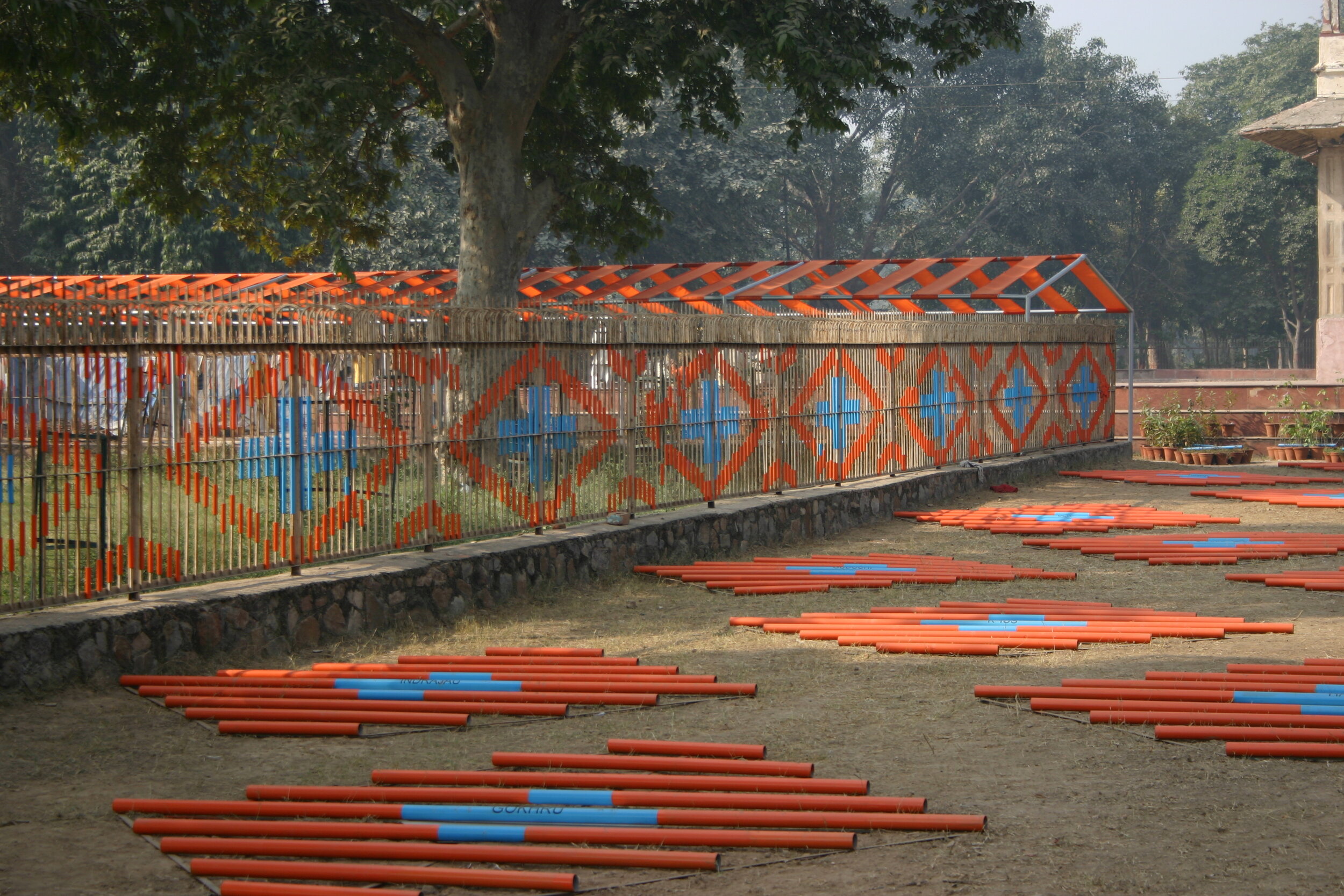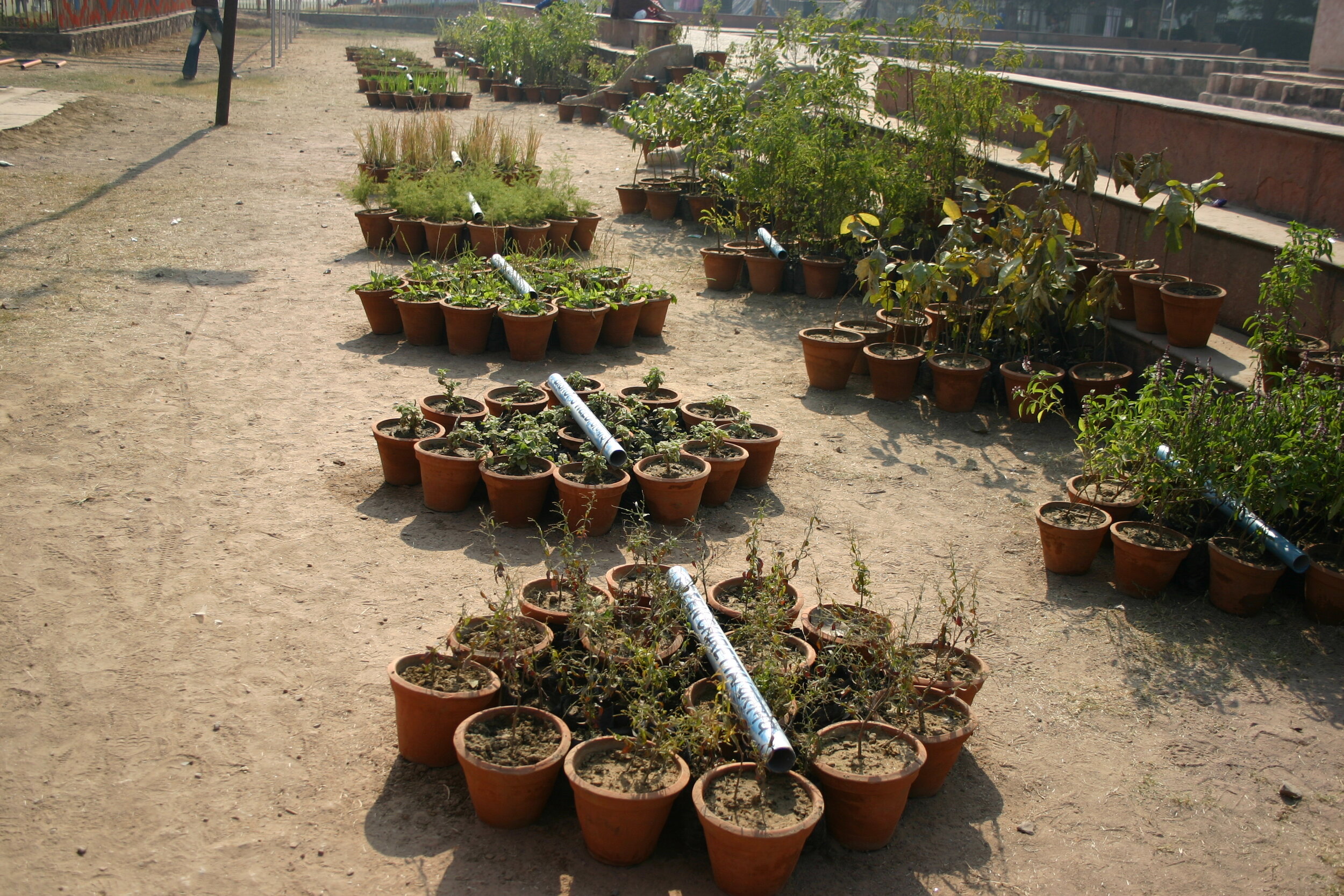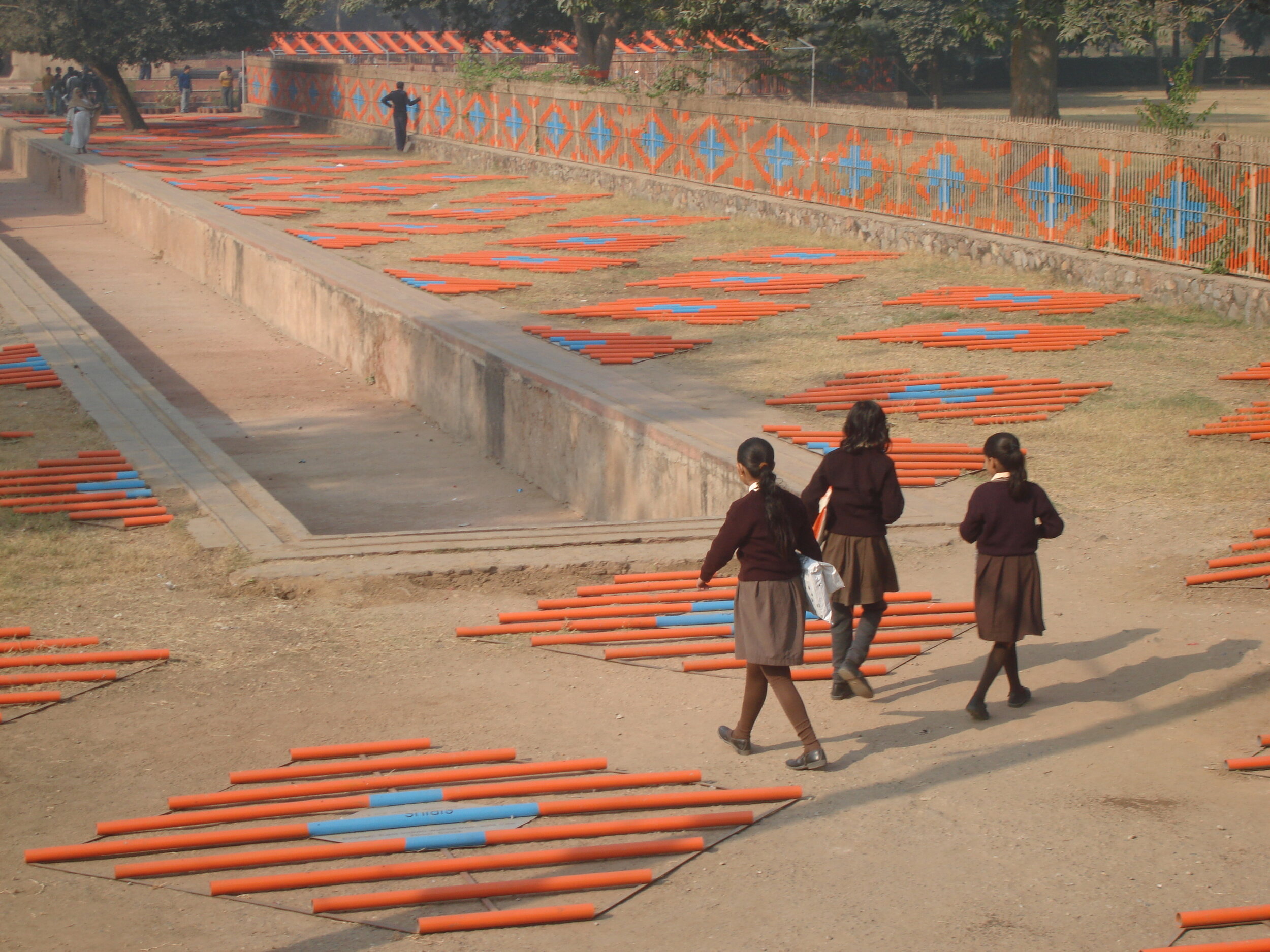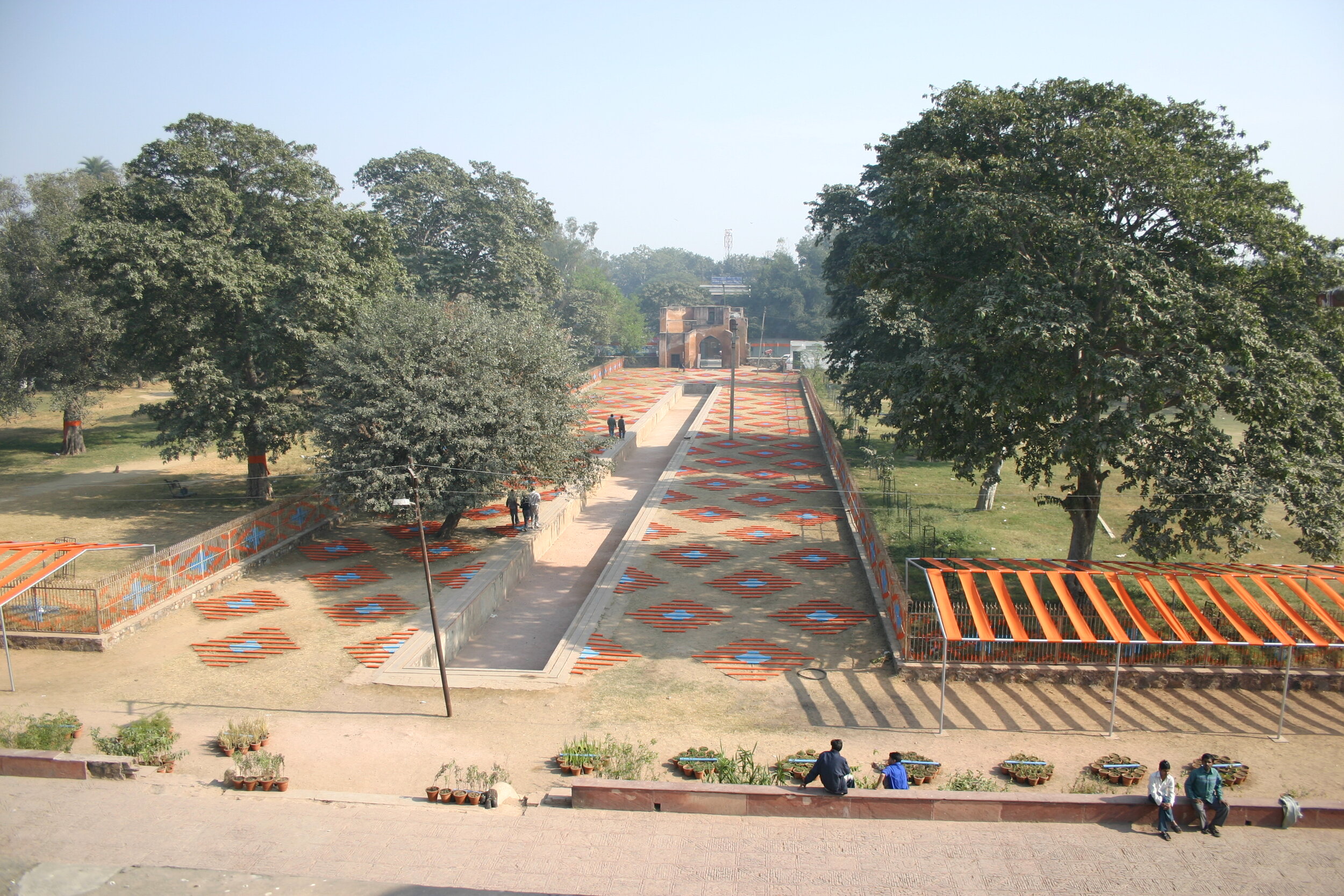Roshanara’s Net, New Dehli, India, 2008
Looking at issues of sustainability, it is important to consider issues large and small, global and local. Roshanara’s Net focused on local issues – the health and well being of the individuals and their communities. At the 2008 48°C Public.Art.Ecology. Festival in New Delhi, India, Miss was invited to explore the relationship between sustainability, urban ecology, and community awareness. Set in the abandoned archeological site of Roshanara’s Tomb, Miss investigated how the park could become significant to the adjacent community, a community of textile workers who have suffered from New Delhi’s ineffective clean air policies.
The project took the form of a temporary garden in the patterns of textiles and rugs full of medicinal plants. One hundred diamond-shaped units made up of evenly spaced orange pipes covered the grounds of a seventeenth-century Mughal pavilion in a city park in Delhi. At the center of each unit was a tin sheet outlined in blue pipes containing the name of one of the medicinal plants with text in Hindi and English describing its use. Looking out over the earthen surface of the park paved with orange and blue linear elements, patterns became visible.
The garden is then extended beyond the boundaries of Roshanara’s Tomb. A quarter-mile of fence along the park's eastern perimeter was wrapped with a band of orange cloth naming the medicinal trees in English and Hindi to be found in the park. Inside the park itself those trees were banded and named with the same material. Three “Portable Parks” – wheeled carts carrying medicinal plants – were transported around the neighborhood to announce the times and dates when Ayurvedic specialists would be speaking at the garden, where 2000 plants lined the base of the pavilion.
Thus, a new set of connections was made between Roshanara’s tomb and the neighborhood surrounding it, as if a temporary net had been cast over the two.






